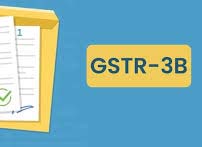New & Updates
- Home
- News

The Goods and Services Tax Network (GSTN) has announced a significant procedural change that will come into effect from the return period of July 2025 (to be filed in August). As per Advisory No. 606 issued on June 7, 2025, the auto-populated fields in Form GSTR-3B—especially those reflecting outward tax liabilities from GSTR-1 and IFF—will be hard-locked and non-editable. This move aims to bring uniformity and transparency in return filings and reduce mismatches that have long plagued the GST compliance ecosystem.
Under the new system, any corrections or updates to the liability data will have to be made through GSTR-1A, the amendment window, before GSTR-3B is filed. Once auto-populated, the system will not allow any manual override of the values in Table 3 of GSTR-3B, which includes details of outward taxable supplies, inward supplies liable to reverse charge, and other liabilities. This hard-locking mechanism ensures that tax reported in GSTR-1 and paid in GSTR-3B is fully aligned.
Taxpayers will now have to depend heavily on the Invoice Management System (IMS) to reconcile invoice-level data, as any mismatch between supplier and recipient will impact the accuracy of the return. Special attention must be given to the timely acceptance or rejection of invoices, and businesses must adopt proactive data validation processes to avoid unintended tax liabilities. It is also important to note that reverse charge on import of services, which is not auto-populated, will remain editable.
This change marks a paradigm shift in the GST compliance landscape, moving from a flexible to a stricter, system-driven return filing model. While the initiative is expected to improve tax administration and reduce fraudulent practices, it also increases the compliance burden on businesses. Taxpayers are advised to strengthen internal controls, implement real-time reconciliation practices, and ensure error-free filing of GSTR-1 and GSTR-1A to avoid complications during GSTR-3B submission.